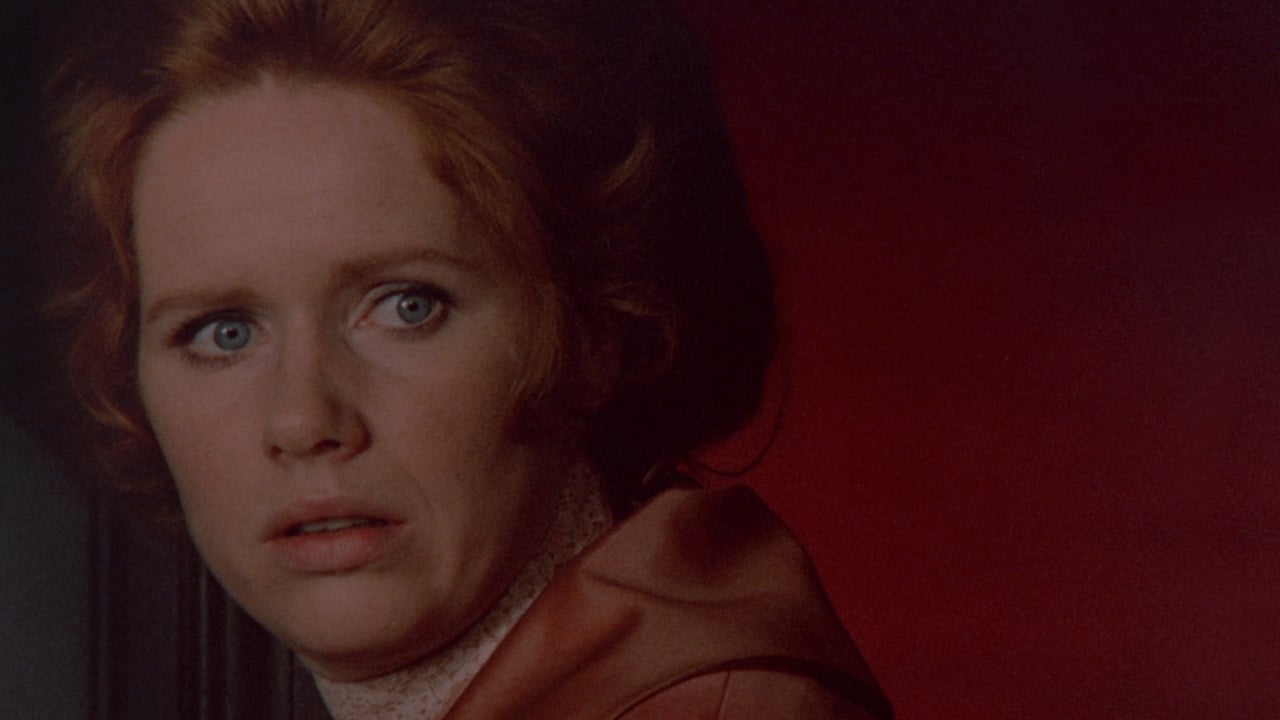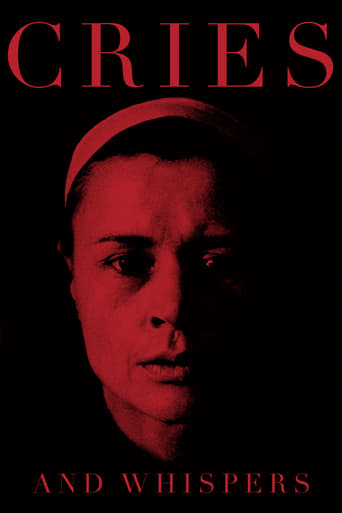

Bergman's "Cries and Whispers" confronts the fears and anxieties of life in such an excruciatingly unfiltered way. It is an utterly depressing film, but a fantastic one. Agnes is dying of cancer. The film begins with a shot of a lone statue in a large field, shrouded I'm fog, then it cuts to a clock, slowly ticking away the seconds, and minutes, and hours. Then it cuts to Agnes. She is sleeping. Her lips are dry, and her breathing is short. She wakes up, tries to go back to sleep, but can't. She begins to cry. She gets out of bed, looks outside, and seems afraid. She writes in her diary that she is in pain. All of this shows the main themes of the movie in the first few minutes. The lone statue, shrouded in fog, represents the loneliness of all of these characters, and truly, most of us. The ticking clock is often a background noise to many otherwise silent scenes, and it represents how time is slowly passing, and we are all slowly fading into our deaths. Agnes attempts to go back to sleep, showing her fear of the pain she is experiencing, but since she can't, it also shows her helplessness toward it, and how her only haven towards it, is unconsciousness. Yet she still fears death.I could go on and on analyzing the rest of the genius of this film: how Karin is afraid of relationships, because she doesn't believe anyone can truly connect to her mostly because of her distant husband, but also she doesn't want to open up to anybody because she secretly hates herself; how Maria acts happy on the outside, but underneath she is just trying to search for a meaningful relationship just as everyone else, and David shows this when he describes her as just trying to find excitement in her existence which consists of boredom and apathy; how their mother was just the same as them; the genius of the color palette, such as how Anna wears white throughout the film, symbolizing her connection to Agnes, while after Agnes dies, both Karin and Maria begin to wear black, symbolizing their disconnect from her, as well as their connect to each other, and Maria wearing red to show how she always has the capacity for love, but only on the surface. Since when the opportunities arise, she always chooses the easy way out, rather than stinking with the people she should love. I just went on for way longer than I expected to there, but there are so many more subtleties in this film that explore how we interact with others, how we'd like to interact with others, why we don't, and the many other fears of ours.
... View MoreIf you're sick of the current trend of having movies use a mostly teal color palette with orange for the explosions, then this is the movie for you. Ingmar Bergman and his cinematographer, Sven Nykvist, use a palette of red, red, red, red, and red as a backdrop for their story of three sisters in circa-1900 Sweden. Agnes (Harriet Andersson) is dying of cancer, and her two sisters Karin (Ingrid Thulin) and Maria (Liv Ullmann) come to comfort her in her final days. Not that they're much comfort, since the whole family is dysfunctional for reasons that are never clearly delineated. And they all have bizarre sexual hangups.I'm sure I'll be in the minority, but I found that when it comes to dysfunctional families, this movie pales in comparison to Bergman's later Autumn Sonata. There, the characters are real people and it's easy to identify with them. Here, they seem like little more than ciphers standing in for basic human emotions. It doesn't help that the film is grindingly tedious when it isn't being gratuitously creepy (in the creepy old uncle way, not in the horror movie way). What was the point of the "dream" sequence toward the end, anyways? 5/10 for the story, 9/10 for the cinematography, which won Nykvist an Oscar - it's not just the overwhelming use of red that makes the cinematography interesting. Since I think story is worth more than cinematography, at least to me, I give it a six, mainly because it is Bergman and I want to cut him some slack.
... View MoreThis is perhaps one of the most accessible Bergman films and one of the least pretentious, which is frankly a problem that I think some of his films have. It is a highly dramatic work of art. I should notice that I am very rigorous on my rating system: 8/10 is for an excellent film, indeed less than 100 films that I have seem score 9 or higher. So one shouldn't think that I found this film bad, only that it wasn't among my favorites ever.The camera work of this film is excellent and the cinematography looks like something from a late Kubrick film.Highly recommended for fans of art films that have a plot, characters and drama (which some Bergman films lack, such as The Seventh Seal).
... View MoreTo me this movie could have been about or was partly about exploring family relationships and how an anticipated death can make people act. I didn't really get much more out of it than that. I definitely had trouble understanding the overall message it was trying to relay to its audience. Regardless, I can definitely applaud Bergman for provoking extremely heavy emotion. I didn't even fully understand what this movie was about, but left it with the most unsettling and intense feeling. From the music, to the moments of deep silence, to the close up shots, and to the extremely blunt and graphic scenes, Bergman stirs many dense emotions. It created such a heavy and unsettling feeling within me to the point where I felt anxiety during and after the movie. I definitely need to watch it again to try to find more meaning within it, but it's worth watching just for the emotional experience of it. It's amazing how (and proves how) movies can completely consume your emotions.
... View More